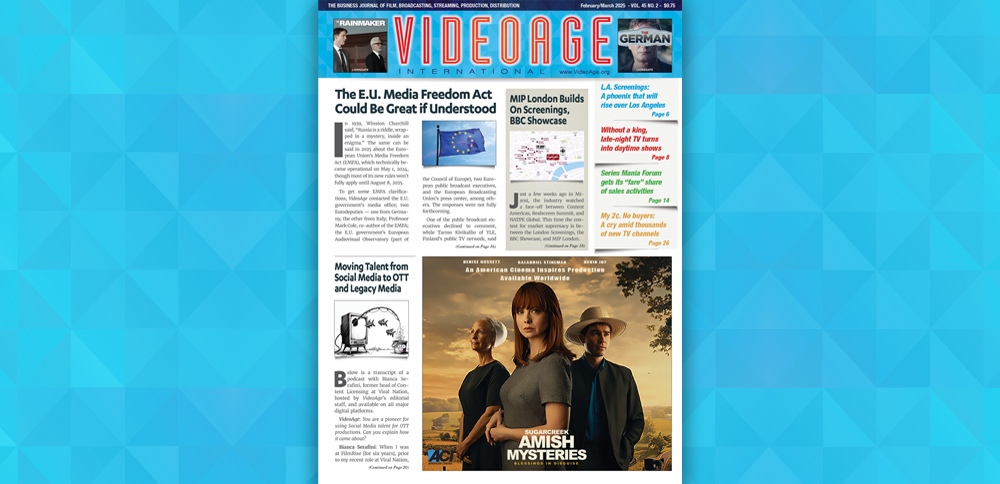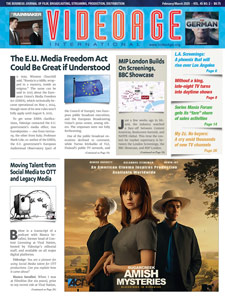The big news in the February Issue of VideoAge is naturally what every international TV industry person has been talking about for the past 10 months — MIP London — and many of the questions revolving around it will be answered in this Issue. Answers are also provided to questions concerning another impending event that is creating anxiety: The L.A. Screenings. A third event that will be analyzed in the February Issue of VideoAge is Series Mania, which is taking place in the midst of a maniacal international TV series conference mania.
As for MIP London, the key point is that it is riding on the wave of the London Screenings and the BBC Showcase, all held at the same time in London. For the Los Angeles screenings, VideoAge has assumed a rising phoenix as the symbol for the 62nd annual L.A. Screenings since VideoAge will be there as it has been since it came up with the name “L.A. Screenings” in 1983. (The market was formerly known as the May Screenings.)
But there is other info to be found in the Issue, as well. February’s front cover stories will report on such things as the upcoming E.U. Media Freedom Act that could be a great incentive to public TV networks if the European Union’s officials can only make it understood. Plus, the Issue offers a detailed method to move talent from Social Media to OTT and legacy media.
In addition, the Issue features VideoAge‘s unique signature — a book review that, this time around, tackles the life and times of the god of U.S. late-night TV, Johnny Carson. And, for those at various TV trade shows who were too busy in meetings, the Issue reviews the three Miami markets that recently took place: Content Americas, Realscreen, and NATPE Global. For the TV executives who travel often, security at airports is explored… It can be practical, but is also sometimes pointless. Plus, a calendar of events can also be found in the Issue.
Finally, the My 2¢ editorial looks at the contradictory situation wherein TV outlets are multiplying with SVoD, AVoD, and FAST, while the number of quality TV productions is dropping, advertising money is increasing, and linear TV continues to be profitable. And yet, the content distribution industry is crying in unison: “No one is buying!”












Leave A Comment